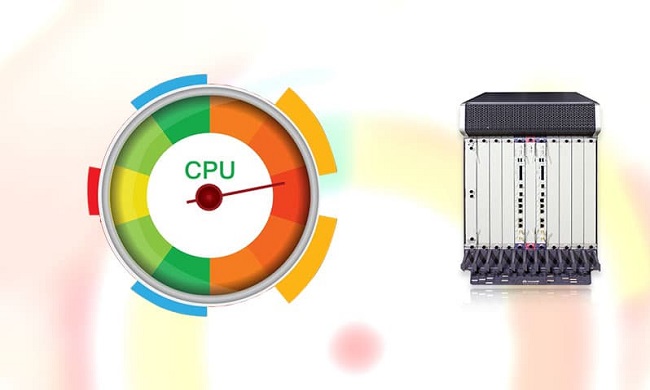In the landscape of Windows operating systems, users often encounter various processes and services running in the background. One such process that has garnered attention due to its high CPU usage is the Windows Modules Installer Worker.
This comprehensive article aims to demystify the Windows Modules Installer Worker, exploring its purpose, the reasons behind its high CPU usage, and effective methods to resolve this issue.

We must know the problem, only then we can tackle it. Windows Modules Installer Worker (TiWorker.exe) is service of the Windows, whose job is to look for new updates and installing them into the system. It manages and coordinates them automatically with the system. It is basically an update service.
Understanding Windows Modules Installer Worker
The Windows Modules Installer Worker (TiWorker.exe) is a system process in Windows operating systems, particularly in Windows 10. It plays a crucial role in the Windows Update process, responsible for installing new updates and fixing system components.
While it’s a vital component for system health and security, it can sometimes lead to high CPU usage, causing concern among users.
Read Also:
- How To Enter BIOS Windows 11?
- How To Exit Full Screen on Windows?
- How Long Does Windows 11 Take to Install
Purpose of Windows Modules Installer Worker
This system process is designed to ensure that your Windows operating system is up-to-date with the latest security patches and performance improvements. It runs in the background, checking, downloading, and installing Windows updates automatically.
Causes of High CPU Usage by Windows Modules Installer Worker
The high CPU usage typically occurs during the process of searching for, downloading, or installing updates. Several factors contribute to this:
1. Large Updates or Multiple Updates
When the system downloads and installs large updates or several updates simultaneously, it can lead to increased CPU usage.
2. System Performance and Specifications
Older systems or those with lower specifications may experience more significant performance impacts during the update process.
3. Corrupted System Files
Corrupted or damaged system files can cause the Windows Modules Installer Worker to use more CPU resources as it attempts to repair and update these files.
4. Conflicts with Other Processes
Occasionally, conflicts with other processes or software can cause abnormal CPU usage.
How to Fix Windows Modules Installer Worker High CPU on Windows 10?
In this article we have come up with two set of solution that can fix the issue. The two methods are provided to you in case you need any additional help or in case anyone method doesn’t work.
Method 1: Stop and Disable the Windows Update Service
In this first case, the Windows update check and installation can be only done if the Windows Update service is running. Thus, stopping or pausing the Windows Update service will automatically shut the checking system. Hence Windows would not be able to check its updates.
Thus, for this, the Windows Module Installer Worker would not be able to use your CPU much. To stop and disable the Windows Update service, follow the steps below –
Step 1: At first press the Windows logo key from your keyboard and the R key/button at the same time instance.
This will invoke the Run box.
Step 2: After that, type services.msc on the Run box.
Step 3: Click on the OK button.
Step 4: The Services Window appears. Next, Double-click on “Windows Update” from the list.
Step 5: Set the startup type to “Disabled” and click on Stop.
Step 6: Click Apply, then click on okay
After this, your CPU usage of your computer must return to normal. If it doesn’t return then you should definitely try the second method.
Method 2: Change your Internet Setting
If by any chance the first method is not working, then you can surely go for the second method. This method is applied by changing your own Internet metered connection. There are two ways too, according to your suitable connection
Case 1: If you are using a Wi-Fi Network
Case 2: If you are using an Ethernet Network
Method 2.1: You’re using a Wi-Fi Network
You must follow the listed steps below in the given order, to solve the issue –
Step 1: At first go to Start, then Settings>Network>Internet>Wi-fi.
Step 2: Click on Advanced Options.
Step 3: Enable the “Set as metered connection” option.
And you are done. After this, go to and check for the issue. We are certain it will be solved.
Method 2.2: You’re Using an Ethernet Network
You must follow the listed steps below in the given order, to solve the issue –
Step 1: First click on the Windows logo key or the Windows button and R key/button at the same time instance.
This will revoke the Run box.
Step 2: After that, type regedit on the Run box.
Step 3: Click on the Ok button
Step 4: After that, you must click on Yes when prompted by UAC (User Account Control).
Step 5: Now, open the window.
Step 6: Go to HKEY_LOCAL_MACHINE, then SOFTWARE>MICROSOFT>Windows NT>Current Version> NetworkList> DefaultMediaCost
Step 7: Right click on the DefaultMediaCost and select Permissions.
Step 8: Click on Add. Type the user name in the object name area.
Step 9: Click Check Names. Click Ok.
Step 10: Select the user which you have added.
Step 11: Click “Allow” for Full Control. Click OK
Step 12: Double click on Ethernet. Set the value date to 2.
Click Ok and close the window.
Step 13: Reboot your pc.
After this, go and check for the issue. It has surely been solved.
Some Easy And Short Methods to Fix High CPU Usage by Windows Modules Installer Worker Easily:
While high CPU usage by the Windows Modules Installer Worker is usually temporary, persistent issues can be addressed with the following solutions:
1. Allow the Process to Complete
Often, the simplest solution is to allow the process to complete its task. Usually, the high CPU usage will decrease once the updates are installed.
2. Check for Updates Manually
Regularly check for Windows updates manually and install them to avoid a buildup of numerous updates, which can cause high CPU usage.
3. Run Windows Update Troubleshooter
Windows provides a built-in troubleshooter to fix update-related issues. Access it via Settings > Update & Security > Troubleshoot > Windows Update.
4. Clear the Windows Update Cache
Clearing the update cache can resolve issues with corrupted update files. This can be done by stopping the Windows Update service and deleting the files in the C:\Windows\SoftwareDistribution folder.
5. Perform a System File Check
Run the System File Checker (SFC) tool to repair corrupted system files. This can be done by running sfc /scannow in the Command Prompt.
6. Set Your Connection as Metered
This prevents Windows from automatically downloading updates, thereby reducing the CPU usage by the Windows Modules Installer Worker. This can be configured in the Network settings.
7. Disable Automatic Windows Updates
While not recommended due to security risks, disabling automatic updates can reduce CPU usage. This can be managed through the Windows Services Manager.
8. Update Device Drivers
Ensure all device drivers are up to date, as outdated drivers can sometimes cause conflicts leading to high CPU usage.
9. Consider Hardware Upgrades
For older systems, upgrading hardware like adding more RAM or switching to an SSD can improve overall performance and mitigate high CPU usage issues.
Read Also:
Conclusion
The Windows Modules Installer Worker is an essential component of the Windows operating system, critical for maintaining system security and performance. High CPU usage by this process is typically a temporary issue, often resolved once updates are installed.
However, if the problem persists, the solutions provided above can effectively reduce CPU usage, ensuring smoother and more efficient system performance. Regular maintenance and keeping your system updated can prevent many such issues, contributing to the longevity and health of your Windows operating system.


